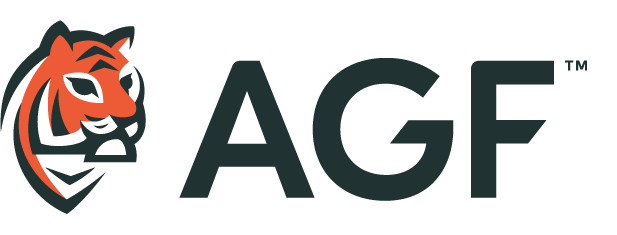by Sound Choices, AGF Management Ltd.

Insights and Market Perspectives
Author: Sound Choices
October 1, 2021
Education Savings:
Which registered plan should you use?
The content in the below article is meant for Canadian investors only.
While Registered Education Savings Plans (RESPs) and Tax-Free Savings Accounts (TFSAs) are both tax-sheltered plans, there are important differences to be aware of before deciding where to put your education savings.
So what should you do? You have to do what makes sense for your situation.
A financial advisor can help you understand what the key differences mean for you and figure out the best way for you to save for your child’s post-secondary education.
You can find out more about RESPs and TFSAs on AGF.com.
Age restrictions
| TFSAs | RESPs |
|---|---|
| Minimum age: 18. No maximum age. |
No minimum or maximum age for the beneficiary of an Individual RESP. For a Family RESP, beneficiary must be under age 21 to be added and contributions can be made until they turn 31. CESG is only available up to age 17 (and special rules apply for those aged 16 and 17). CLB available to age 15 but can be applied for retroactively until the beneficiary reaches the age of 21. In cases where the beneficiary is 18 or older, the application must be made by the beneficiary and cannot be made on their behalf by a parent or guardian. QESI available to Quebec residents up to age 17. Similar to the Federal Program, special rules apply for those aged 16 and 17). BCTESG a $1,200 one-time grant for BC residents. They are eligible for BCTESG for 3 years from their 6th birthday to the day before their 9th birthday. From the date the RESP is opened, you can make contributions for 31 years and the RESP must be closed after 35 years (here are some options for unused RESP money). |
| Did you know? You can’t open a TFSA in the name of a minor (person under 18). With an RESP you need to pay attention to specific age requirements for government grants. An Individual RESP can be opened for a beneficiary of any age – including yourself. |
|
Beneficiaries
| TFSAs | RESPs |
|---|---|
| A beneficiary or a successor annuitant can be named for estate-planning purposes. (optional) | With an Individual RESP, there’s one active beneficiary. There is no relationship requirement so anyone can be named as the beneficiary – even the subscriber. With a Family RESP, a subscriber can name one or more beneficiaries, provided they are all related to the subscriber by blood or adoption. Beneficiary doesn’t own any part of the RESP. |
| Did you know? For an Individual RESP, the beneficiary can be any age, whereas for a Family RESP, the beneficiary must be under age 21 to be added. The money in a Family RESP – including the federal and, if applicable, provincial grant money as well as the income earned – can be shared among the beneficiaries up to the beneficiary’s personal maximum. Note: the Canada Learning Bond cannot be shared. For a TFSA: Choosing a successor holder or beneficiary is optional. If you don’t designate either, the value of your TFSA will go to your estate. If you designate both a successor holder and a beneficiary, the successor holder takes precedence. For an RESP: The beneficiary doesn’t inherit the RESP if the subscriber dies. |
|
Carry-forward
| TFSAs | RESPs |
|---|---|
| Unused contribution room can be carried forward. Any withdrawals are added back to unused contribution room the next calendar year. |
No annual contribution limit to carry forward – doesn’t apply. Unused basic CESG (not additional CESG) can be carried forward. |
| Did you know? With a TFSA, you have the flexibility to withdraw and then re-contribute that amount again the following year. With an RESP, withdrawn contributions are not added back to your contribution room and cannot be re-contributed. If you cannot make an RESP contribution in any given year, you can carry over unused Basic CESG. By contributing more than $2,500 in subsequent years, you can get up to $1,000 of Basic CESG per calendar year if unused CESG amounts are available. |
|
Contribution limits
| TFSAs | RESPs |
|---|---|
| Annual – $6,000 for 2021 (plus unused contribution room) | No annual limit Lifetime contribution limit: $50,000 (for each beneficiary – not for the contributor) CESG limit: $7,200 (for each beneficiary) CLB limit: $2,000 (for each beneficiary) QESI limit: $3,600 (for each beneficiary) BCTESG limit: $1,200 (One-time grant) Can make contributions for 31 years (and must close the RESP after 35 years) |
| Did you know? Any withdrawals from a TFSA are added back to the unused contribution room – but not until the next calendar year. With an RESP, withdrawn contributions are not added back to your contribution room and cannot be re-contributed. If a beneficiary has multiple RESPs, the subscribers need to co-ordinate their efforts to ensure they don’t combine to go over the lifetime limit. Once the RESP lifetime contribution limit has been reached, no more contributions can be made in that beneficiary’s name – even if you’ve made withdrawals. |
|
Government grants
| TFSAs | RESPs |
|---|---|
| None | Canada Education Savings Grant (CESG) Canada Learning Bond (CLB) British Columbia Training and Education Savings Grant (BCTESG) Quebec Education Savings Incentive (QESI) |
| Did you know? On the first $2,500 you contribute to an RESP, you get an automatic 20% boost – with the CESG-matching amount. Find out if you qualify for additional CESG. You don't have to contribute to an RESP in order to qualify for the CLB. The CLB cannot be shared among the beneficiaries in a Family RESP. |
|
Ownership
| TFSAs | RESPs |
|---|---|
| Single ownership | Single & joint ownership options are available (note: joint ownership is available to spouses or common-law partners only). Subscriber contributes in the name of a designated beneficiary and retains control over the account. The federal government will provide the Canada Education Savings Grant (CESG) of 20% of the contributions, up to $500 per year, per beneficiary. The government can take back the grants if the contributions are withdrawn while the beneficiary is not enrolled in post-secondary studies. |
| Did you know? The RESP subscriber and the TFSA holder own and control the respective accounts. |
|
Taxation
| TFSAs | RESPs |
|---|---|
| Contribution not tax-deductible. Grows tax-free. Contributions and income earned are not subject to tax when withdrawn. |
Contribution not tax-deductible. Grows tax-free – government grants and income earned within the plan aren’t taxed until they are withdrawn. Educational Assistance Payment (EAP) Withdrawal – which consists of earnings or “accumulated income” plus the grants themselves – is taxable in the beneficiary’s hands. Post-Secondary Education (PSE) Withdrawal and Capital Withdrawal (no proof of enrolment) – both of which consist only of contributions (investment principal) in the RESP – are not taxed since contributions were made with after-tax dollars. |
| Did you know? All the money in a TFSA can be withdrawn tax-free. The EAP portion of the RESP withdrawal is taxed in the hands of the beneficiary – who should be in a lower tax bracket. The capital withdrawn is not subject to tax. |
|
Withdrawals
| TFSAs | RESPs |
|---|---|
| Tax-free. Generate contribution room the next calendar year. |
The EAP can be used by the beneficiary to cover any expenses while they’re in school, such as rent, transportation, etc. If the beneficiary qualifies for an EAP, the subscriber can also withdraw their contributions with no consequences. If the beneficiary is not enrolled at the time of the withdrawal, the subscriber can request a capital withdrawal – a proportionate amount of the grant will automatically be paid to the government. |
| Did you know? EAPs are limited to $5,000 in the first 13 weeks of enrolment for full-time students and $2,500 for each 13-week period of enrolment for part-time students. So while, technically, a subscriber can choose to withdraw all their contributions and use them in any way – regardless of whether or not the beneficiary goes to school, if their contributions are withdrawn while the beneficiary is not eligible for an EAP, the grants received will be repaid to the government. |
|
RO 1855463
About AGF Management Limited
Founded in 1957, AGF Management Limited (AGF) is an independent and globally diverse asset management firm. AGF brings a disciplined approach to delivering excellence in investment management through its fundamental, quantitative, alternative and high-net-worth businesses focused on providing an exceptional client experience. AGF’s suite of investment solutions extends globally to a wide range of clients, from financial advisors and individual investors to institutional investors including pension plans, corporate plans, sovereign wealth funds and endowments and foundations.
For further information, please visit AGF.com.
© 2021 AGF Management Limited. All rights reserved.
This post was first published at the AGF Perspectives Blog.















